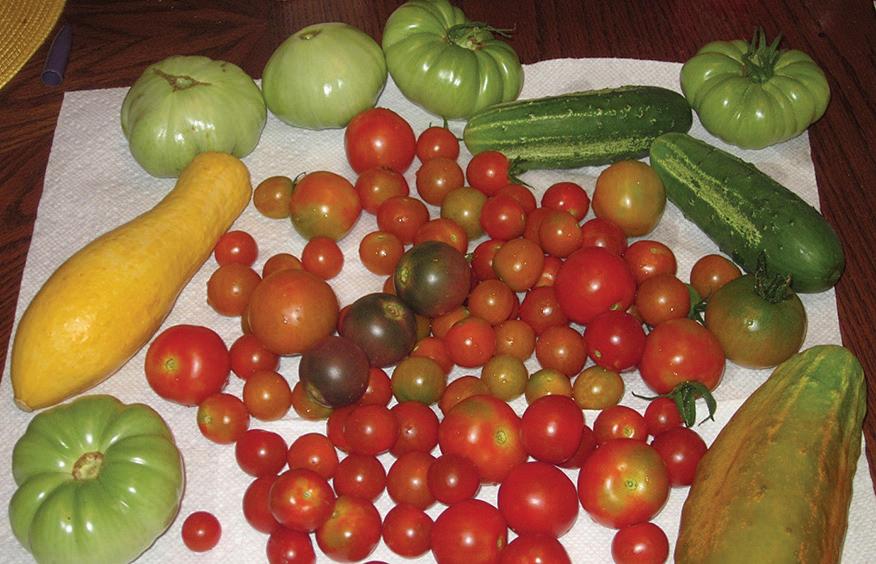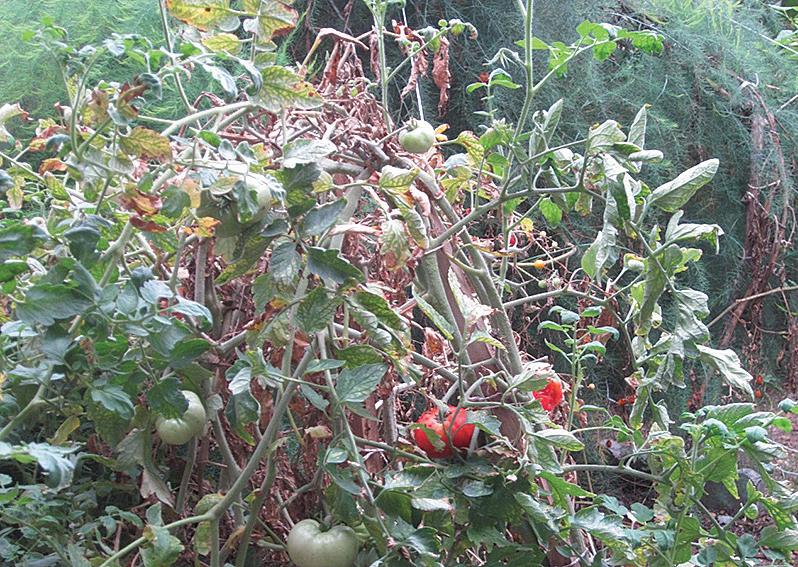
3 minute read
My Gardening Inspiration By Elijah Pugh
Master Gardener's Perspective
My Gardening Inspiration
My interest in vegetable gardening was heightened by my visit to the Callaway Gardens as a parent chaperone for my daughter’s elementary school class field trip. I experienced the magic of the Cecil B. Day Butterfly Center, the beautiful hiking trails, the excellent educational wildlife exhibits and the culmination of the visit with a tour of the vegetable gardens.
After returning home I quickly dug a small garden on the side of my home. A reminder: always call 811, the national call-before-you-dig phone number, before you dig in new areas so that buried utilities and cable lines can be marked with paint or flags. I used a pitchfork to do the digging, but the garden tilter is less back breaking.
I started my garden with squash, tomatoes, and bell pepper plants. Eventually, I started planting seeds to get more diversity. Due to the limited planting space, I limited my selection to tomatoes and hot peppers.
I planted these tomato seeds: Mr. Stripey (Tigerella), Red Robin, Dr. Carolyn, Sun Gold Hybrid, Sunsugar FT Hybrid, Big Red Dwarf, Snow White, Lemon Cherry VFF Hybrid, Green Doctor, Black Cherry, Red Rose, Sugary, Red Pear, Yellow Pear, Sweet Gold FT Hybrid, Limmony, Sweetie, Cherry Cascade

Hybrid, Micro Tom and Garden Leader Monster. These seeds had maturity times from 55 to 80 days. They grow from heights of 8 inches to long vines in pots or the ground.
The tomatoes that have smaller heights, often referred to as “bush” are classified as determinate. These varieties of tomatoes grow a fixed mature size and ripen all their fruit in a short period. The long vine growing tomatoes are classified as indeterminate and keep growing for the whole growing season.
I stake both determinate and indeterminate varieties for support, although the determinate variety usually do not need support. I have used almost anything for stakes like wooden and metal broom handles, metal cylinders from broken furniture, cut tree branches, home grown bamboo sticks and have also purchased six feet wooden stakes. I use different length cuts of nylon string with the ends melted to keep them from unraveling. I use slip knots so the strings can be easily repositioned or removed and be washed for use next season.
All varieties of tomatoes should be pruned to remove lower leaves and lower suckers. These are side shoots that appear in the junction between the stem and a branch of a tomato plant. This prevents infecting plants with

bacteria from water splashes from the ground and to avoid suckers competing for nutrients with the original plant. When left to grow, suckers will become another main stem with branches, flowers, fruit, and even more suckers of their own. Your plant may have more fruit if you let the suckers grow, but the tomatoes will be smaller and the plant will be more cumbersome, requiring a lot of effort to stake.
I am a sucker for suckers. I cannot bring myself to throw away suckers when pruning. Tomato suckers can be used to increase the number of your tomato plants. Suckers can be placed directly into the soil, treated with root growth powder, and placed into the soil or in water until the roots form and then be planted.
I grow the seven hottest peppers in the world from seeds. The Carolina Reaper, the present hottest pepper, Trinidad Moruga Scorpion, White Bhut Jolokia, Bhut Jolokia (Ghost) Pepper, Trinidad 7 Pot – Primo, Trinidad Scorpion Butch T, and Big Sun Habanero. I stake the pepper plants in a similar manner as tomato plants.
Elijah Pugh, an intern in the 2020 Master Gardener Class, lives in Prattville. For more information on becoming a master gardener, visit www. capcitymga.org or email capcitymga@gmail.com.
Free Subscriptions www.riverregionboom.com











